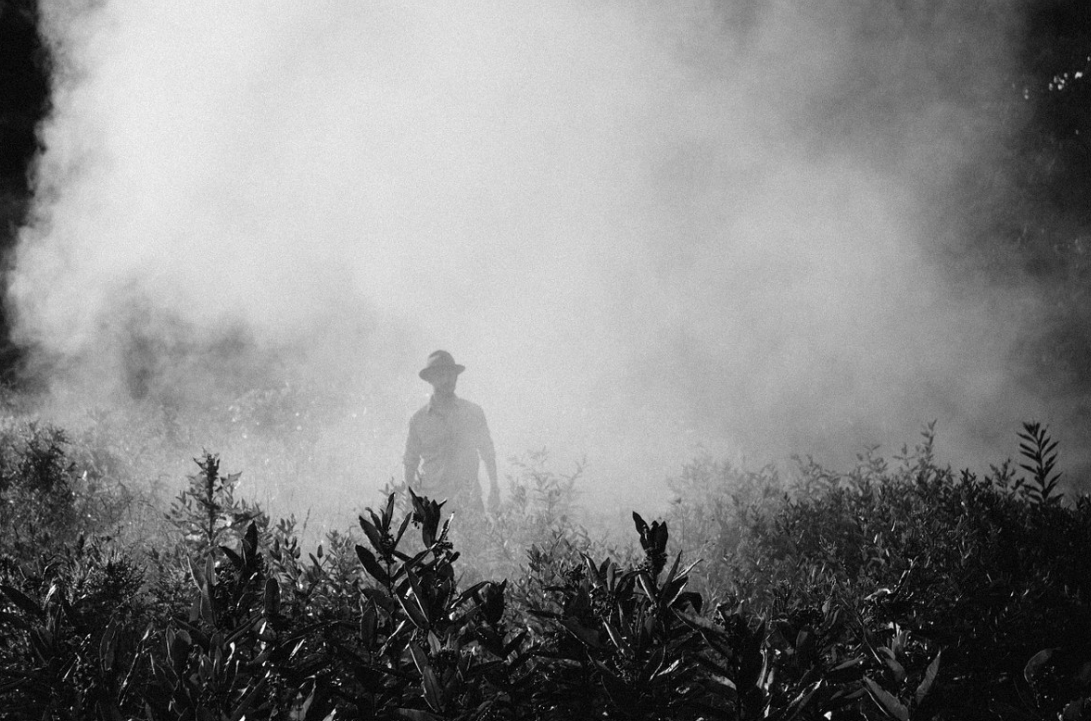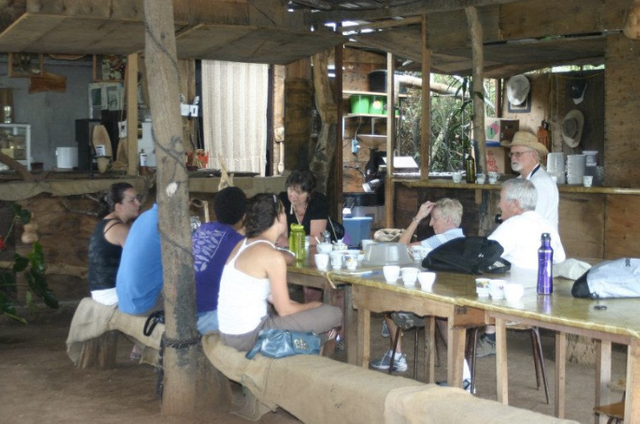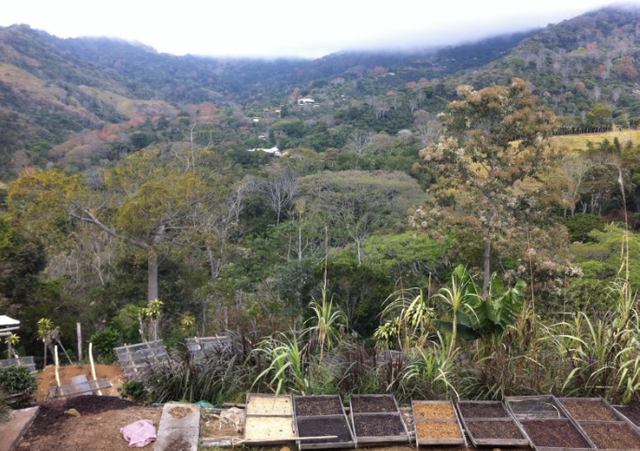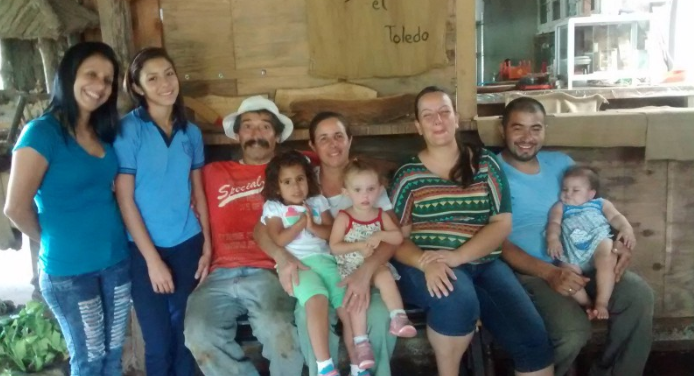The Miracle at El Toledo Coffee Farm
Imagine this scenario: You’re a husband and wife farming team in Costa Rica. You have a small plot of land that provides enough to feed your two young boys.
Then, in the early 1990s, something odd begins: You get ill every time you apply chemicals to your plants. Stomach and headaches won’t allow you to get out of bed.

Recently, American certification companies have been coming down, convincing you to practice organic agriculture. They promise that after three years of not using chemicals, you’ll get a hefty premium for your beans. Seeing it as manna from heaven, you join the movement.
But there’s a problem. Those certifiers only get paid if you sign up. That means that they oversold the promise of organic agriculture, without adequately preparing you for the rough times ahead. What happens when you quit chemical inputs cold-turkey in a mono-culture coffee farm?
Yield drops. Fast, and hard. At this particular farm, the harvest dropped an astounding 80%! Given the fact that you can’t go back to using chemicals because of your health problems, what do you do to put food on the table?
The Obstacle is the Way
This was the situation that Gerardo and Sole Calderon-Vargas found themselves in, roughly 25 years ago. They had two options: sell the farm — dubbed El Toledo — and move to the capital of San Jose to look for work, or find other ways to make ends meet while keeping the farm.
I, and probably most of my American friends, would have chosen the former. Indeed, that’s what almost all of us do in our post-college lives as it is today.
But Costa Rica has an entirely different culture, one that is more tribal and familial. Giving up the farm also meant moving away from a social support network that could never be replaced.

That led the couple to choose the latter. And for the next fifteen years, they would endure a difficult schedule that saw them take up odd jobs in many industries — including taxi driving, tourism, truck driving, construction, and working as an auto mechanic. By the skin of their teeth, they were able to make ends meet.
During that period of time, coffee farming went from being the main form of employment to little more than a hobby.
But there is something different and special about this family. They have open minds, are very curious, and wanted to learn why the coffee production on their farm fell so rapidly. They began researching what was happening — which wasn’t easy to do in the pre-Internet days.
They invited a German professor of agro-forestry to visit the farm and tell them what was wrong. His response surprised them:
“You just don’t have a very good farm.”
“What do you mean?” they protested. “We’ve been certified organic and don’t use any chemicals.”
“That’s fine and good,” he explained, “but you also don’t have any diversity.”
“Neither do any of the other farms in the country,” they reasoned.
“Sure,” the professor retorted, “but they have chemicals to provide what the coffee plants need. You don’t. In order to get there, you have to give your farm back to nature, and let Her establish a balance on your land.”
At this point it’s worth interjecting that in most situations — whether in Costa Rica or the United States — if an academic shows up on a farm and tells the farmers to, “Stop trying to control what happens,” and, “Give the farm back to nature,” that’s when the shotgun comes out and you’re kindly asked to leave.

Except now, the tables had been turned. The family no longer had anything to lose by taking this professor up on his offer. And — as I said — they were an open minded group.
The Miracle of El Toledo
The kinds of miracles that take place in nature are anti-climatic. There’s no game-winning shot to point at, or sudden bumper-crop to celebrate. We live in a world of instant feedback loops; if our smartphone takes more than three seconds to load, we get frustrated.
In farming, the feedback loop is 365 days long. Even then, it can be difficult to separate cause from effect.
I say that because I’m going to do an injustice to what occurred at El Toledo between 1995 and 2010.

Slowly but surely, the family gave the farm back to nature.
It started by introducing native trees, plants and shrubs. It continued when the family decided to stop using any organic pesticides or herbicides. And it accelerated when they decided to — with the exception of pruning the trees once every twelve years, and trying to control for erosion — stop trying to control what happens in their fields at all.
“The balance that nature now provides on the farm,” says Gerardo’s son Gabriel, “is better and wiser than anything we can accomplish on our own.”
And this is where the miracle comes in. By 2010, the farm was producing 60% of the yield that it used to, up drastically from where it was immediately after becoming organic. And it was doing it sustainably, without outside inputs, and by allowing all of the other forms of life on the farm to flourish.
The real long-term math of sustainable farming
Still, some people look at that 40% gap and think, “What a shame! That’s still a serious shortfall.” But to that, there are three key things to remember:
First and foremost, the family has its health. Gerardo hasn’t experienced any of those debilitating illnesses in years, and the soil that he’ll turn over to the next generation will be healthier than anywhere else in the country. There simply isn’t a price tag you can put on either of those things.
Second, the family learned where their own level of “Enough” is from the ordeal of the previous fifteen years. After experiencing living on the edge of material existence, they were able to see first hand that additional income only adds to life satisfaction up to a point. After that, other things — like relationships, community, and doing something meaningful with your life — are the main drivers of satisfaction.

That the family could focus on farming and farming only was more than enough to bring immense pleasure to the family.
But the third reason is often the most overlooked. Before, the farm was a monoculture, meaning that it produced just coffee.
Since it had become so diverse, it now offered up many other things: mangoes, mandarin oranges, peppers, cashew fruits, passion fruit, pineapples, four different varieties of bananas, and — most notably for a Costa Rican diet — enough beans to provide for the family for an entire year!
Put it all together, and you can see why this family has no problem accepting their station in their community right now. While they might not pull in the same yield that they used to, they are proud of what they are doing, and know that their farm is incredibly resilient after building itself up from ground zero over twenty years ago.
Congratulations @antifragile! You have completed some achievement on Steemit and have been rewarded with new badge(s) :
Click on any badge to view your own Board of Honor on SteemitBoard.
For more information about SteemitBoard, click here
If you no longer want to receive notifications, reply to this comment with the word
STOPHey, thanks for posting this and all your other content on Costa Rica. I'm looking to possibly relocate there, and you were found through a search. Are you still there?
Steemit.chat is the official steemit.com chat site, and I have a #panama_costa_rica channel there. If you wouldn't mind helping, would you please come over and chat?
I would love to talk to you about your experience!